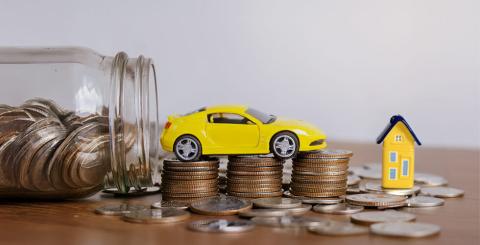I caused an accident by running a red light. Am I covered?

Even good drivers make mistakes sometimes, like running a red light. These things happen, which is why it’s important to be properly covered in the event of a collision with another motorist. But will the damage to your vehicle still be covered if you’re at fault in the accident? Here’s what you need to know about your car insurance if you run a red light and cause an accident.
Get the right coverage
The short answer is yes, your insurer will cover the damage to your vehicle, but only if you have the right coverage for this type of accident. In other words, if you want to be compensated for the damage, your car insurance policy must include “Collision and overturning” or “Comprehensive” protection, in addition to third party liability coverage.
For example, if your car insurance policy includes only third party liability, sometimes referred to as “one-way” coverage, your insurer will not cover the damage to your vehicle caused by the collision. In Québec, the owner of any road vehicle must have third party liability insurance to cover the owner for:
- Property damage to their vehicle in the event of a collision between at least two vehicles in Québec for which they are not responsible; liability is determined by the insurer using the chart set out in the Direct Compensation Agreement
- Physical damage and bodily harm in the event of an accident outside Québec for which they are responsible
- Property damage caused to others for which they are responsible
Comprehensive coverage, or “two-way” coverage, ensures you’ll be compensated in the event of damage to your insured vehicles. This coverage means your car insurance policy includes “Comprehensive” or “Collision and overturning” protection as well as “Risks that are not a collision or overturning” protection, which covers risks such as theft or damage caused by fire, wind or hail, and vandalism, to name a few. Additional coverage is also available to meet your specific needs. Ask your damage insurance representative what’s right for you.
What to do in an accident
After a collision, if there are any physical injuries, fainting, or discomfort of any kind, emergency services should be contacted immediately.
If there are no injuries, the parties involved must fill out a joint report as soon as possible. This document lets the parties involved identify themselves and give details on the accident and any damage to the vehicles. You can obtain a copy of this report on the Groupement des assureurs automobiles (GAA) website or by downloading the mobile app.
But just remember that the sole purpose of the joint report is to record the facts. It does not establish who was at fault in an accident. Your insurer will use the joint report to determine your share of responsibility for the accident in order to calculate the compensation to which you are entitled.
How does the insurer determine liability?
Your insurer will determine who is responsible for the collision, which is why it is important to contact them immediately after completing the joint report. They will use the chart set out in the Direct Compensation Agreement to establish who is at fault. The Agreement applies to collisions occurring in Québec between two vehicles whose owners have been identified.
Note that the Agreement does not apply to hit-and-runs, as the owner of the vehicle responsible for the accident cannot be identified. If you want to ensure you’ll be compensated in the event of a hit-and-run, you must have the optional “Comprehensive” or “Collision and overturning” protection. This is something you can mention when shopping for a new policy.
In short, it’s important to fully understand the terms and conditions of your car insurance before you get behind the wheel. That way, you can avoid unpleasant surprises when it comes time to submit a claim, whether you’re responsible for the accident or not. Happy driving!



